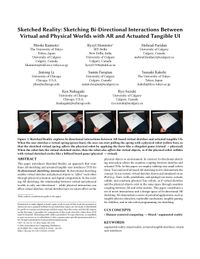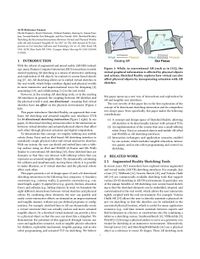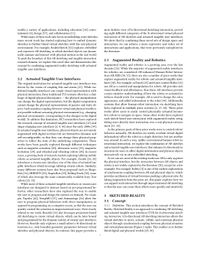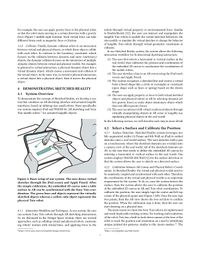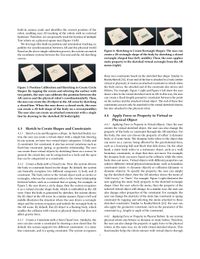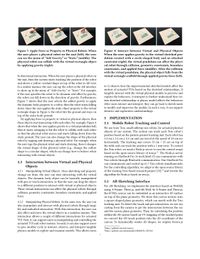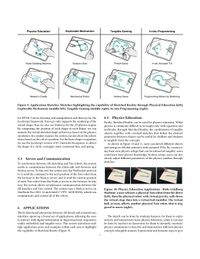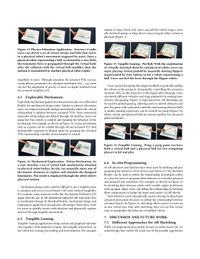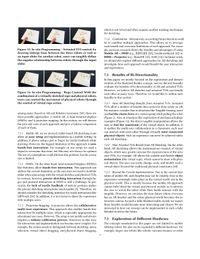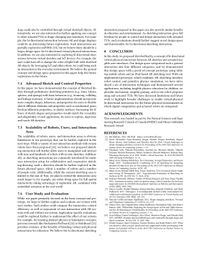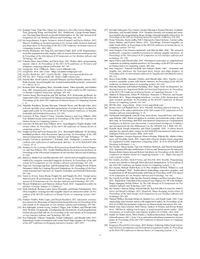Sketched Reality: Sketching Bi-Directional Interactions Between Virtual and Physical Worlds with AR and Actuated Tangible UI
Abstract
This paper introduces Sketched Reality, an approach that com- bines AR sketching and actuated tangible user interfaces (TUI) for bi-directional sketching interaction. Bi-directional sketching enables virtual sketches and physical objects to "affect" each other through physical actuation and digital computation. In the existing AR sketching, the relationship between virtual and physical worlds is only one-directional --- while physical interaction can affect virtual sketches, virtual sketches have no return effect on the physical objects or environment. In contrast, bi-directional sketching interaction allows the seamless coupling between sketches and actuated TUIs. In this paper, we employ tabletop-size small robots (Sony Toio) and an iPad-based AR sketching tool to demonstrate the concept. In our system, virtual sketches drawn and simulated on an iPad (e.g., lines, walls, pendulums, and springs) can move, actuate, collide, and constrain physical Toio robots, as if virtual sketches and the physical objects exist in the same space through seamless coupling between AR and robot motion. This paper contributes a set of novel interactions and a design space of bi-directional AR sketching. We demonstrate a series of potential applications, such as tangible physics education, explorable mechanism, tangible gaming for children, and in-situ robot programming via sketching.
Publication
Hiroki Kaimoto, Kyzyl Monteiro, Mehrad Faridan, Jiatong Li, Samin Farajian, Yasuaki Kakehi, Ken Nakagaki, and Ryo Suzuki. 2022. Sketched Reality: Sketching Bi-Directional Interactions Between Virtual and Physical Worlds with AR and Actuated Tangible UI. In Proceedings of the 35th Annual ACM Symposium on User Interface Software and Technology (UIST '22). ACM, New York, NY, USA, .
DOI: https://doi.org/10.1145/3526113.3545626
Download PDF
Slide
coming soon
